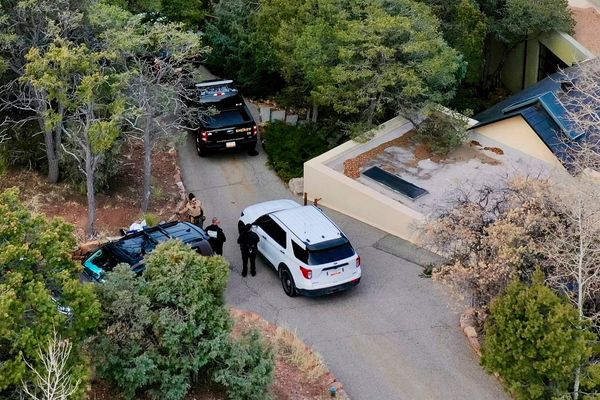
If a tree could see, what might this one ...
A black bear lumbering along a reedy shoreline with a cluster of Potawatomi hunters in close pursuit.
A fur trader and entrepreneur named DuSable exploring the land beyond his new home.
Men digging graves. Caskets buried — and surfacing again because the soil is too sandy to hold them.
Swans settling in one of the nearby ponds — a gift from New York — and the beginning of a zoo.
A fire raging, destroying a city. Another city rising, steel and glass, like jagged teeth.
This tree, among the oldest living things in the city, will come down Monday — if all goes according to plan. The bur oak, believed to be 250 to 300 years old, is dying, say staff at Lincoln Park Zoo, where the tree sits cordoned off just west of the Helen Brach Primate House.
Nan Schonberg was strolling Sunday across the zoo grounds, a place she has visited many times since she was a small child.
At one time or another, she’s sat on all of the benches within the shade of the tree’s ropy, twisting branches.

“You wish that you knew what it has seen, what’s passed by it, what it has housed. A tree is home for lots and lots of animals,” said Schonberg, who gave her age as “over 65.”
She said she wished the zoo could do something to save the tree, finding reason for hope in a slender green shoot visible on one of the tree’s lower branches Sunday.
But it’s a false hope.
“It has been declining for about two years, and its prominent location really lends itself to being a bit of a safety hazard,” said Katrina Quint, the zoo’s director of horticulture.
Some 2 million people a year visit the zoo, Quint said.
The tree, which is about 70 feet tall and with a diameter of about 46 inches, shed all of its leaves in August 2021, about six weeks before a healthy tree might, Quint said.
On Sunday, the tree looked as though it was already dead — its gnarled branches a charcoal-black silhouette against a sullen sky.

But through the centuries, the tree’s acorns would have provided food for raccoons, deer, squirrels and perhaps even black bears, when they ran wild in Illinois. The tree likely offered nooks for birds to nest and hollows where squirrels and owls might shelter in winter.
And it survived the Great Chicago Fire of 1871, which stopped just north of Fullerton Avenue. No one knows if the fleeing masses took shelter beneath the tree. But many did so just south of the tree — where bodies were being removed from the lakefront cemetery to be hauled to graveyards beyond city limits.
“As the story goes, everybody ran to get away from the Chicago Fire. At that point, they were still disinterring graves,” said Pamela Bannos, a Northwestern University professor who has written extensively about the history of Lincoln Park and the cemetery within its boundaries. “There are all these evocative stories that talk about people jumping into graves ... to escape the fire.”
Bannos said it’s sad that there is now no escape for the bur oak.

“What else do we have that’s that old in the city?” she said.
Nevertheless, in the coming days, a crane will rise alongside the tree. Visitors to the zoo will hear the buzz of chainsaws on Monday.
“We really are witnessing a piece of history, and it’s amazing to me how easily things can be removed and how long and slow it takes them to grow,” Quint said.
Staff have taken cuttings from the tree, and the hope is that one of those cuttings will one day sprout again from the same spot.
On Friday, which is Arbor Day, the zoo is organizing a series of activities, including giving guests the opportunity to write “thank-you notes to the tree.” Zoo horticulture experts plan to lead arboretum tours of the grounds at 10 a.m. and 1 p.m. The tours are free, but pre-registration is required. Go to www.eventbrite.com/e/lincoln-park-zoo-arbor-day-arboretum-tours-registration-610056283767.







